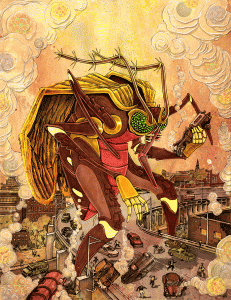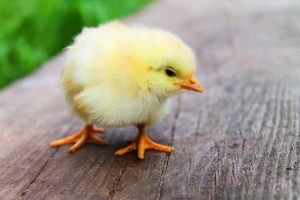Enter your address to receive notifications about new posts to your email.
Science & Publishing
-
Science & Publishing
Behind the Cover: Attack of the 50 Foot Mosquito
When geneticist Rob Unckless took his son to Lego Club at the local library, he was not expecting to start a new collaboration. The result is the striking piece of science-inspired art that graces the cover of the February issue of GENETICS. Created by artist Kent Smith, “Attack of the 50 Foot Mosquito” was inspired…
-
Science & Publishing
The unique genetic variation of the Greenlandic Inuit population could help find novel disease associations
Despite being covered by a massive, permanent ice sheet, Greenland has been continuously inhabited by humans for over a thousand years. Most modern Greenlanders are Inuit whose ancestors migrated eastward from Canada around 1000 AD, bringing technology like kayaks and dogsleds. They eventually settled on the coasts of the world’s largest island, hunting whales and…
-
Science & Publishing
Start with the parts list: Introducing standardized reagent tables
Transparent research starts with an unambiguous parts list. To help promote the wider use of identifiers and recognized symbols in biological research, FlyBase (with input from other model organism databases) is developing a resource for tracking and reporting reagents in a more standardized way, aiding curation into research databases. The GSA journals are now encouraging…
-
Science & Publishing
Rapid immune evolution: exception or rule?
The arms race between pathogens and their hosts leaves clear genetic marks: the most quickly evolving parts of host genomes often include immune genes. But are these fast-movers the exception among immune genes, or do most genes in this class bear the genetic signature of strong selection? In the January issue of GENETICS, Early et…
-
Science & Publishing
Brighter GFP gets the green light
Off the coast of North America drifts a jellyfish that has unknowingly revolutionized molecular biology. Aequorea victoria produces green fluorescent protein (GFP), a substance that adds a green tinge to the jelly’s bioluminescence, which can sometimes be seen around its margins. By inserting a slightly modified version of the GFP gene into the genomes of…
-
Science & Publishing
New in G3: a beaver genome, some sparkling yeast, and neon proteins
Check out the February issue of G3! Table of Contents Genome Report Genome Report: Identification and Validation of Antigenic Proteins from Pajaroellobacter abortibovis Using De Novo Genome Sequence Assembly and Reverse Vaccinology Bryan T. Welly, Michael R. Miller, Jeffrey L. Stott, Myra T. Blanchard, Alma D. Islas-Trejo, Sean M. O’Rourke, Amy E. Young, Juan F.…
-
Science & Publishing
Behind the cover: Oh Canada!
February marks the launch of a crisp new look and improved navigation at the G3 website. Go check it out; we’re very proud of the design! We are also unveiling a new cover layout that allows the art submitted by our authors to shine. This month’s cover celebrates the first published genome assembly of the Canadian…
-
Science & Publishing
February GENETICS Highlights
Check out the February issue of GENETICS by looking at the highlights or the full table of contents! ISSUE HIGHLIGHTS Feeding-related traits are affected by dosage of the foraging gene in Drosophila melanogaster, pp. 761-773 Aaron M. Allen, Ina Anreiter, Megan C. Neville, and Marla B. Sokolowski The foraging gene has been implicated in multiple feeding-related traits. Allen…
-
Science & Publishing
In the Year of the Rooster, a new chicken genome assembly is hatched
The chicken is one of humanity’s closest and oldest allies. With a worldwide population in the billions, this former jungle fowl is one of the most important domesticated animals on Earth. In the February issue of G3, Warren et al. further our understanding of this familiar bird, presenting a new and substantially improved chicken genome assembly…
-
Science & Publishing
Beyond stressed-out: the hypoxic response
Deep within a tumor, sequestered from an adequate blood supply, a cancer cell grows and multiplies. Far beneath Earth’s surface, a microbe lives and thrives in similarly low-oxygen conditions. Generally, oxygen depletion causes serious distress to aerobic organisms—what allows these life forms to survive? The cellular response to hypoxia is massive. Hypoxia alters the expression…
-
Science & Publishing
Pathogenic yeast uniquely resists toxicity of aggregation-prone proteins
Misfolded proteins can be so toxic that they cause cell death. At least nine neurodegenerative disorders are caused by misfolded proteins with expanded stretches of glutamine residues (polyQ tracts), including the invariably fatal Huntington’s disease. But some organisms are resistant to the harmful effects of these proteins. In the January issue of G3, Leach et…






![By Jim G from Silicon Valley, CA, USA [CC BY 2.0], via Wikimedia Commons](https://s43361.pcdn.co/wp-content/uploads/2017/02/dsc26476-_crystal_jelly_-aequ-300x225.jpg)




